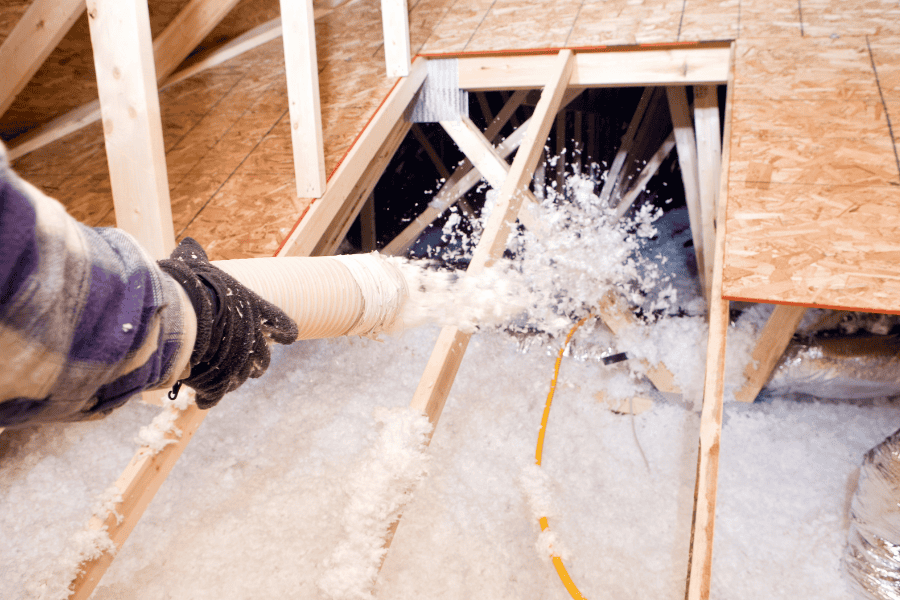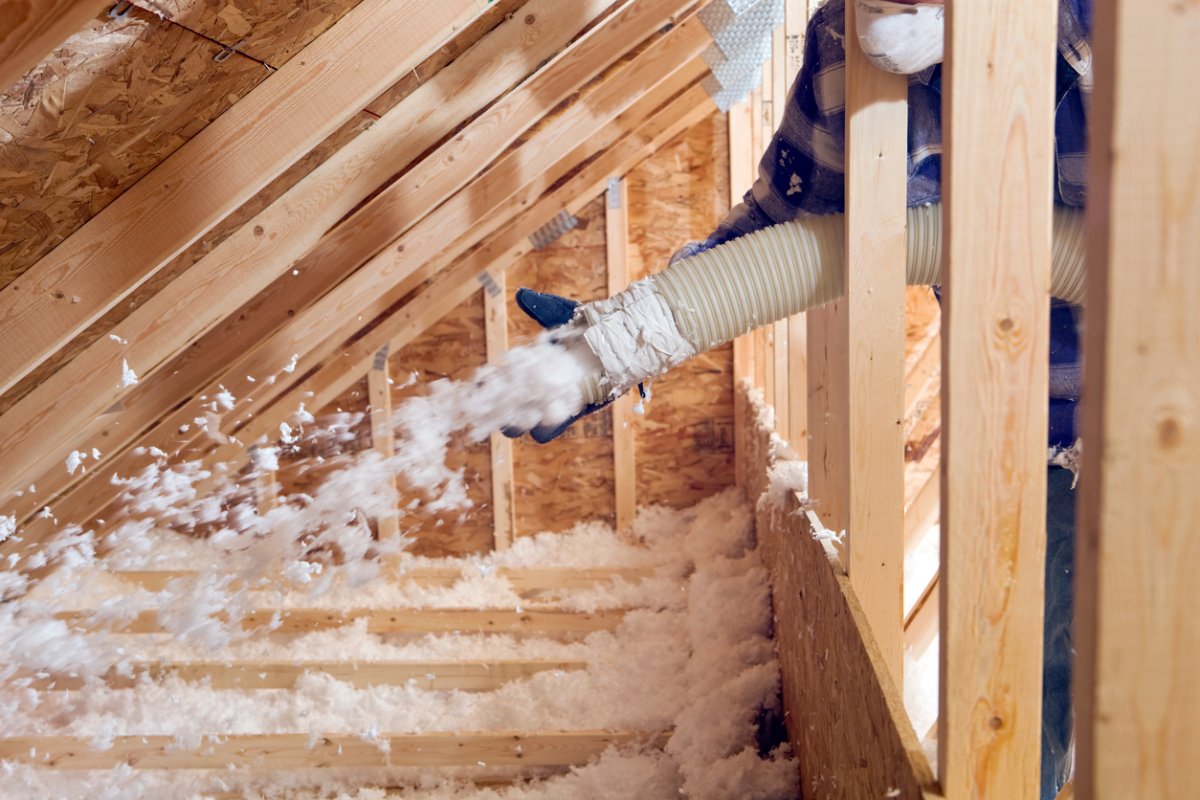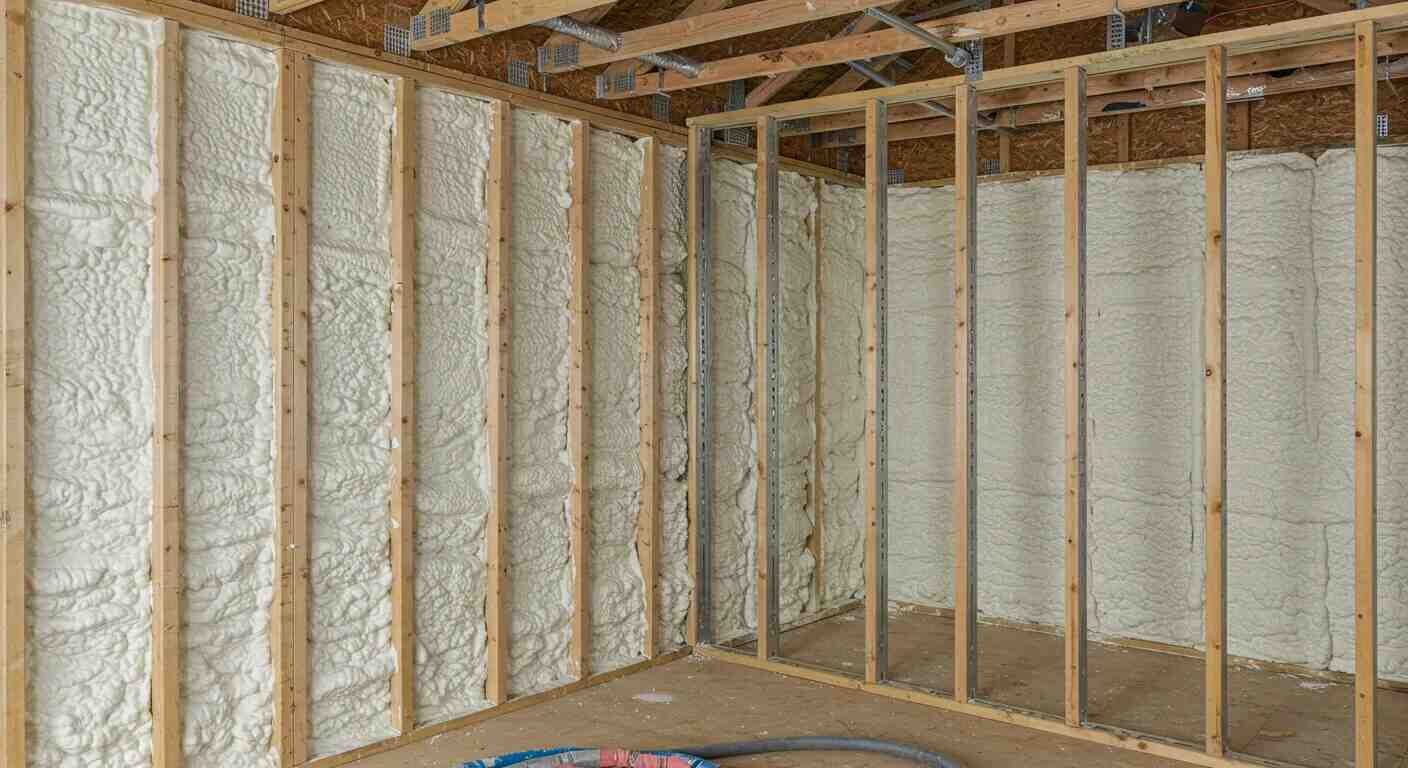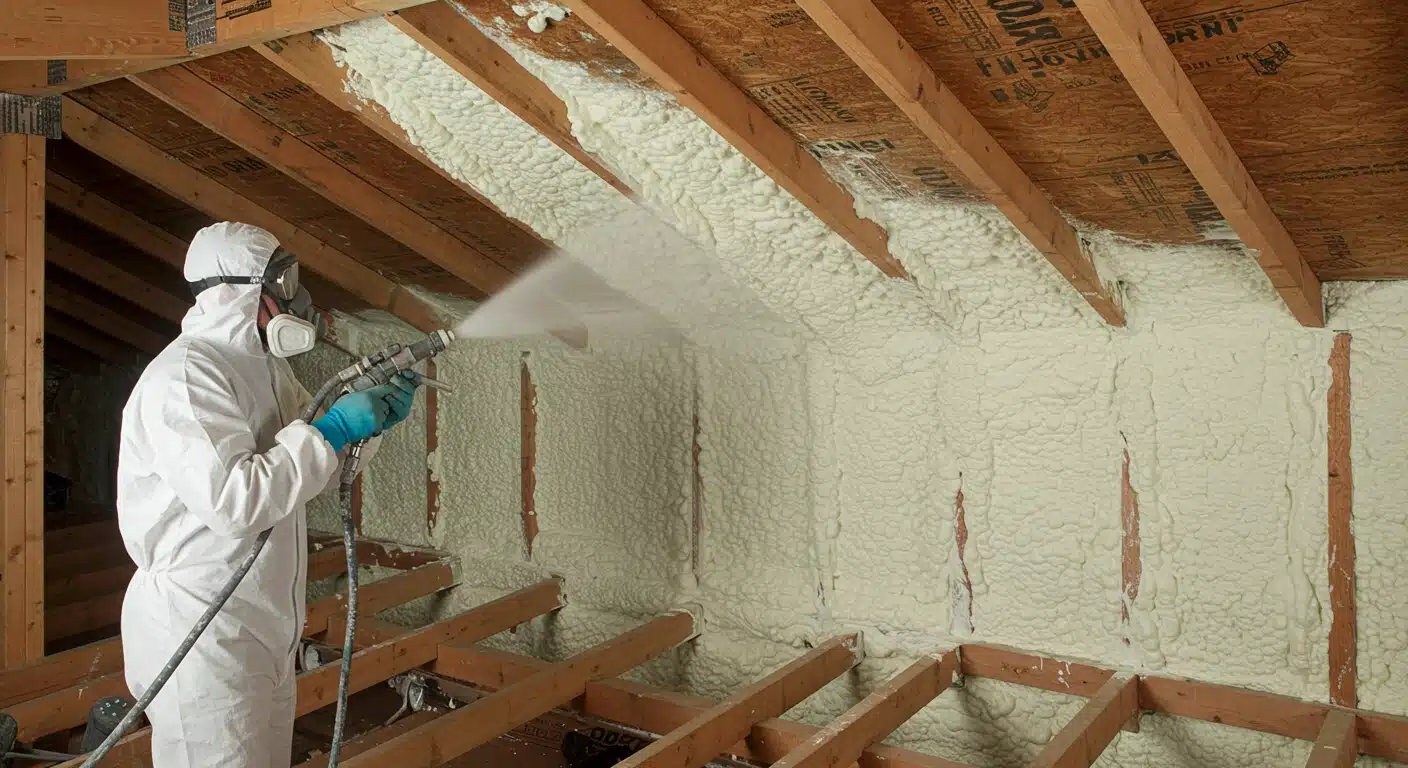Can blown-in insulation reduce the amount of dust mites in your home?
A closer look at building science principles shows how this relationship works and how different types of blown-in insulation contribute to a healthier home.

Yes, upgrading your attic with blown-in insulation can indirectly help reduce dust mite populations in a home, but it’s not a direct poison or repellent. The connection is all about controlling the environment. Dust mites thrive in warm, humid conditions, specifically with relative humidity levels above 50%. A poorly insulated and leaky attic contributes to exactly this kind of environment. By properly insulating and, just as importantly, air sealing the attic, blown-in insulation creates a stable indoor climate that is less hospitable to these microscopic pests.
The process works by creating a complete thermal barrier that keeps the home’s conditioned air in and the outside air out. This helps maintain a lower, more consistent indoor humidity level, robbing dust mites of the moisture they need to survive. While the insulation itself isn’t a pesticide, it’s a powerful tool for environmental control. A closer look at building science principles shows how this relationship works and how different types of blown-in insulation contribute to a healthier home.
The Environment Dust Mites Need to Survive
Dust mites are microscopic creatures that are one of the most common causes of year-round allergies and asthma. They don’t bite or sting; the problem is the allergenic proteins in their waste particles. To thrive, they need three things: warmth (68 to 77 degrees Fahrenheit), food (dead human skin cells), and, most importantly, high humidity.
They cannot drink water in the traditional sense. Instead, they absorb moisture from the air directly through their bodies. When the relative humidity drops below 50%, they struggle to survive and reproduce. This is where insulation comes into play. A significant amount of a home’s air and moisture transfer happens through the ceiling into the attic. If this area is not properly sealed and insulated, it can lead to humidity problems throughout the house, creating the perfect breeding ground for dust mites.
How Blown-In Insulation and Air Sealing Disrupt the Dust Mite Life Cycle
An expert blown-in insulation company divides this in two-part process: air sealing first, then insulating. Together, these two steps create an environment that is hostile to dust mites.
Controlling Humidity Through Air Sealing
Before any insulation is blown, all the small cracks and gaps in the attic floor must be sealed. This includes openings around pipes, wires, light fixtures, and the attic hatch. This step is what stops the warm, moist air from the living space from escaping into the attic. When this humid air is allowed to leak into a cold attic during the winter, it can cause condensation, leading to damp conditions that support both dust mites and mold. By stopping this air movement, you gain significant control over your home’s indoor humidity.
Maintaining Stable Temperatures with Insulation
Once the air leaks are sealed, the blown-in insulation is installed to create a thick, seamless blanket. This thermal barrier keeps the interior ceiling surfaces warmer in the winter and cooler in the summer. Warmer ceilings in winter prevent condensation from forming, which is another way to reduce unwanted moisture. The overall effect is a more stable, drier indoor environment where humidity levels are easier to keep below the 50% threshold that dust mites need.
Comparing Blown-In Insulation Types
Different blown-in insulation materials can contribute to a healthier home environment in slightly different ways.
- Cellulose Insulation: This material is made from recycled paper and is treated with borates. The borate treatment serves multiple purposes: it makes the cellulose fire-retardant, and it also acts as a natural pest and mold inhibitor. While not specifically marketed for dust mites, borates are known to be effective against insects and fungi, adding an extra layer of protection against the general conditions that support allergens.
- Fiberglass Insulation: Blown-in fiberglass is made from inorganic glass fibers. It does not absorb or hold moisture in the same way that cellulose can, and it provides no food source for mold. By creating a dry, inorganic environment, it helps to discourage the growth of mold, which can be an indicator of the same damp conditions that dust mites love.
This table highlights some of the properties of these materials relevant to indoor air quality.
| Property | Blown-In Cellulose | Blown-In Fiberglass |
|---|---|---|
| Pest Inhibition | Good (borate treatment) | Fair (inorganic material) |
| Mold Resistance | Good (borate treatment) | Excellent (inorganic material) |
| Moisture Handling | Can absorb and hold moisture | Resists moisture absorption |
| Primary Benefit | Borate treatment, recycled content | Excellent moisture resistance |
Bonus Tip: When having cellulose installed, ensure the contractor is using a product with a 100% borate or borax treatment, not a cheaper ammonium sulfate blend, which can be corrosive and less effective over the long term.
Things to Consider Before You Insulate
While choosing the right material is important, upgrading your insulation is not a magic bullet for a dust mite problem. It should be seen as part of a larger, holistic approach to improving indoor air quality.
- Insulation is Part of a System: A well-insulated attic won’t solve a humidity problem caused by a damp basement or a poorly ventilated bathroom. Homeowners should look at their entire house as a system and address all sources of excess moisture.
- Ventilation is Key: Creating a tighter, better-insulated home means that pollutants and moisture generated inside can become trapped. It’s important to have a good ventilation strategy, which includes using kitchen and bathroom exhaust fans and potentially a whole-house ventilation system.
- Other Dust Mite Control Measures: Insulation should be combined with other proven methods for controlling dust mites. This includes using allergen-proof covers on mattresses and pillows, washing bedding in hot water weekly, and maintaining low indoor humidity with a dehumidifier if necessary.
- Removing Old Insulation: If the existing attic insulation is old, dirty, or contaminated with mold or pest droppings, it should be removed if you want the best new insulation installation. This gets rid of a major source of existing allergens and allows for a thorough air sealing job.
Questions About Insulation and Allergies
Can the insulation itself cause allergies?
During the installation process, both cellulose and fiberglass can release dust and particulates into the air, which is why professionals wear respiratory protection. However, once installed and left undisturbed, neither material is a significant source of indoor allergens.
Does blown-in insulation get dusty over time?
Yes, any surface in an attic will accumulate dust over the years. However, because the attic is properly sealed from the living space below, this dust should not affect the home’s indoor air quality.
What is the best type of insulation for someone with severe allergies?
This can depend on the specific allergy. Spray foam insulation is often considered a top choice because it creates a superior air seal, blocking almost all airborne pollutants. Among blown-in options, both cellulose and fiberglass are good choices, with cellulose having the added benefit of its pest-inhibiting borate treatment.
Will new insulation help with my asthma?
By improving indoor air quality and reducing common triggers like dust mites and mold, upgrading your insulation can be a very positive step for asthma sufferers. However, it’s important to consult with a doctor about specific medical concerns.
How do I know if my attic is properly air sealed?
The best way is to have a professional energy audit performed. An auditor can use a blower door test to depressurize the house and an infrared camera to pinpoint the exact locations of air leaks into the attic.
A Healthier Home Environment
Upgrading your home’s blown-in insulation is a smart move for energy savings, but its benefits for your health and comfort are just as important. By helping to create a drier, more stable indoor climate, it makes your home a far less inviting place for dust mites to live. When combined with other air quality strategies, it’s a foundational step toward creating a cleaner, healthier living space for you and your family.
Professional Guidance for a Healthier Home
If you’re concerned about humidity, dust, or other allergens in your home, a professional insulation assessment can be a great place to start. An expert can evaluate your attic’s current condition, check for air leaks, and recommend a comprehensive solution. For a detailed consultation, homeowners can contact the experienced team at All Foam and Insulation. They are available to discuss your home’s needs at (541) 826-9600 or by email at joe@allphasewx.com.
Reviewer: Lily Johnson offered her feedback after reviewing this post. With 8 years in the spray foam insulation field, her suggestions centered around improving outreach to homeowners looking for quality insulation solutions.









